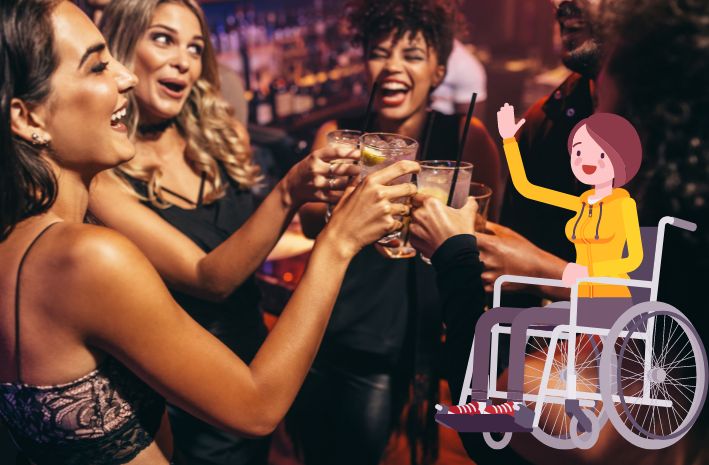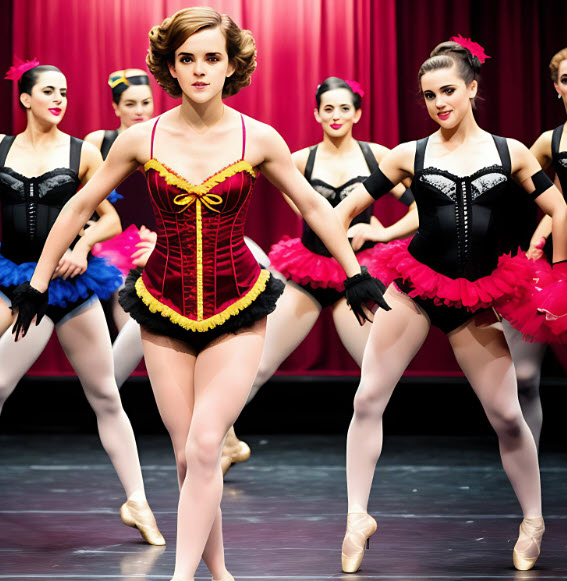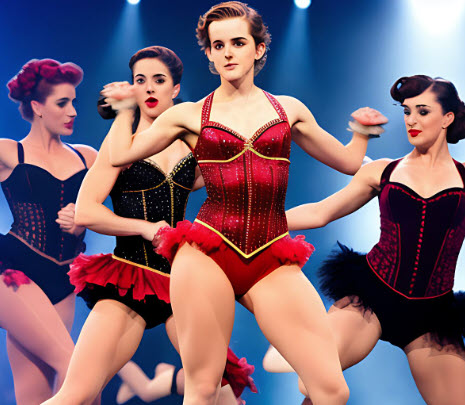Are you a club owner looking to make your establishment more accessible for people with disabilities? It may seem like an insurmountable task, but it’s actually easier than you think! By understanding the needs of disabled patrons, removing obstacles to access, and communicating clearly with customers, clubs can become inclusive environments designed to help everyone feel included. The first step in improving accessibility for patrons with disabilities is to ensure that the physical environment of your club can accommodate a wide range of needs.

Let’s talk about disability accessibility at clubs. It may not be the first thing you think of when planning a night out with your friends, but it’s worth considering. Why? Well, for starters, everyone deserves to have a good time regardless of their physical limitations. By ensuring that your favorite club is accessible to all, you’re not only showing consideration for your fellow human beings but also making it possible for more people to enjoy the same experience you love. So, the next time you’re making plans, why not check if the club you’re heading to has wheelchair ramps, accessible restrooms, and enough room for everyone to move around comfortably? Trust us; it’ll make a big difference. Club owners are responsible for ensuring their establishments are accommodating to everyone, regardless of physical limitations.
Legal Requirements for Accessibility under the Americans with Disabilities Act
The Americans with Disabilities Act (ADA) was created to ensure that people with disabilities have equal access and opportunities in all areas of life. This includes access to buildings, transportation, employment, and communication. To meet the legal requirements for accessibility under the ADA, businesses and organizations must make reasonable accommodations for individuals with disabilities. This might include installing access ramps, widening doorways, or providing sign language interpreters. Additionally, all new buildings and renovations must comply with specific accessibility guidelines to ensure that they are accessible to everyone. By meeting these legal requirements, businesses and organizations can help to create a more inclusive and accessible society for all. However, going beyond just meeting the legal requirements is important. Clubs should strive to create an environment that goes above and beyond just meeting the minimum requirements. This includes creating a welcoming atmosphere for patrons with disabilities, training staff on disability etiquette and awareness, providing accessible menus and event information in alternative formats, and offering additional accommodations as needed. Furthermore, accessibility should be considered not only for legal compliance but also as a moral obligation to create an inclusive society where everyone has equal rights and opportunities to participate in all aspects of life, including nightlife activities.
Physically Accessible Night Club
One of the most crucial aspects of making clubs accessible for individuals with disabilities is ensuring that entrances and exits are easily navigable. Handicap ramps and level access should be provided in addition to metal stairs to accommodate wheelchair users and those with mobility impairments. Additionally, automatic doors or easy-to-open doors should be installed at all entry and exit points, making it simpler for individuals with disabilities to enter and exit the club without assistance. These changes can make a significant impact on the overall accessibility of a club, creating an inviting and inclusive environment from the moment guests arrive.
 Once inside the club, creating a layout that allows for smooth navigation is essential. Wider doorways and aisles can accommodate wheelchair users and those who require additional space to move comfortably. Accessible flooring materials, such as non-slip surfaces and low-pile carpets, can help prevent accidents and make it easier for those with mobility aids to traverse the club. Thoughtful design choices like these can greatly enhance the overall experience for individuals with disabilities and ensure that they can fully participate in the club’s activities.
Once inside the club, creating a layout that allows for smooth navigation is essential. Wider doorways and aisles can accommodate wheelchair users and those who require additional space to move comfortably. Accessible flooring materials, such as non-slip surfaces and low-pile carpets, can help prevent accidents and make it easier for those with mobility aids to traverse the club. Thoughtful design choices like these can greatly enhance the overall experience for individuals with disabilities and ensure that they can fully participate in the club’s activities.
Seating and table arrangements should also be taken into account to create a more inclusive environment. Adjustable tables and seating options can cater to a wide range of physical needs and preferences, ensuring that all guests feel comfortable and welcome. Additionally, clear pathways between tables should be maintained, allowing individuals with disabilities to move about the club and engage with others easily. Similarly, accessible restrooms with stalls and fixtures designed for individuals with disabilities and grab bars and other support features are essential for creating an inclusive space. By prioritizing accessibility in all aspects of the club’s layout and design, venues can provide an enjoyable experience for guests of all abilities.
Trained Staff and Inclusive Events
To ensure that clubs are truly accessible and inclusive, staff training and awareness must be a priority. Providing disability awareness training for all employees, from bouncers to bartenders, helps create a more empathetic and knowledgeable team. This training should include information about various types of disabilities, etiquette when interacting with individuals with disabilities, and debunking common misconceptions. By raising awareness and understanding among staff, clubs can foster a more inclusive environment where all patrons feel respected and valued.
Effective communication is essential in any service environment, and this is especially true when it comes to interacting with individuals with disabilities. Staff should be trained in various communication strategies, including using simple and clear language, being patient and attentive, and utilizing alternative communication methods if needed, such as sign language or written communication. By equipping staff with the skills to communicate effectively with individuals with disabilities, clubs can ensure that all guests feel understood and supported.
Emergency preparedness is another crucial aspect of staff training. Employees should be educated on how to assist individuals with disabilities in the event of an emergency. This may include understanding evacuation procedures for wheelchair users, knowing the location of emergency exits, and providing clear instructions to visually or hearing-impaired guests. By preparing staff to handle emergencies effectively, clubs can create a safer and more secure environment for everyone.
Inclusive programming and events are essential for making clubs more accessible to those with disabilities. Adapting club activities to accommodate diverse abilities ensures that everyone can participate fully and enjoy the experience. Collaborating with disability organizations for event planning can provide valuable insights and resources, helping clubs to create events that are both engaging and accessible. Furthermore, promoting accessible events and activities can help to raise awareness about the importance of inclusion and attract a broader audience. By committing to inclusive programming, clubs can foster a sense of belonging and create memorable experiences for guests of all abilities.
In conclusion, accessibility and inclusivity in clubs are essential for creating welcoming environments that cater to the needs of all patrons, including those with disabilities. By addressing physical accessibility, sensory considerations, staff training, and inclusive programming, clubs can break down barriers and ensure everyone can enjoy their experiences fully. By prioritizing accessibility, clubs comply with legal requirements and demonstrate their commitment to fostering a diverse and inclusive community.
It is crucial for clubs to continuously evaluate and improve their accessibility features and practices and seek feedback from individuals with disabilities and disability organizations. By doing so, clubs can stay informed about best practices and make necessary adjustments to enhance their accessibility further. Collaboration between clubs and disability organizations can lead to more inclusive environments catering to a wider range of patrons, creating a vibrant and dynamic nightlife scene that celebrates diversity. It’s time for clubs to take action and embrace accessibility, ensuring that everyone can dance the night away, regardless of their abilities.

